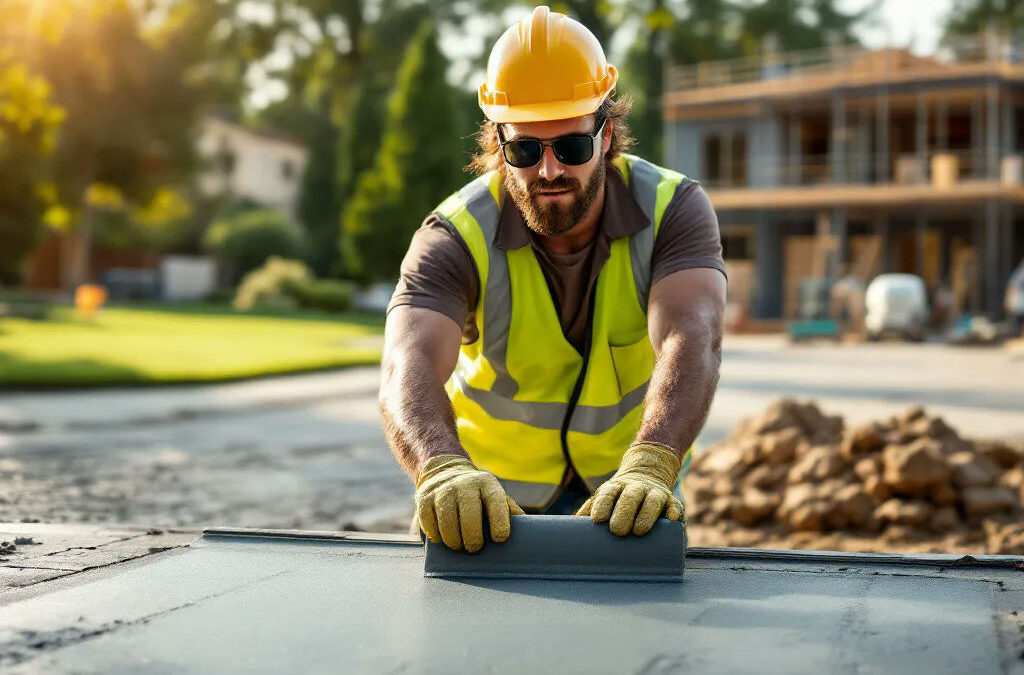I. Introduction
Concrete is a versatile and durable material used in a variety of construction projects. Understanding the differences between residential and commercial concrete applications is crucial for homeowners, builders, and business owners alike. This article will delve into the defining features of both residential and commercial concrete uses, highlighting their unique characteristics, applications, and considerations.
II. Characteristics of Residential Concrete
A. Typical Features of Residential Concrete Projects
Residential concrete projects are generally smaller in scale compared to commercial applications. These projects often prioritize aesthetic considerations, allowing homeowners to customize their spaces to reflect personal tastes and styles. The volume of concrete used is typically less, which can influence both the design and execution of these projects.
B. Common Types of Residential Concrete Applications
Residential concrete work includes driveways and walkways that provide accessibility and curb appeal. Patios and outdoor spaces are often created for relaxation and entertainment, enhancing the livability of homes. Additionally, foundations for homes are a critical application, providing structural support, while decorative concrete options, such as stamped or colored finishes, allow for a unique look that can elevate any residential space.
C. Material Specifications and Types Used in Residential Projects
Materials used for residential concrete projects often prioritize look and functionality. Standard concrete mixes may suffice for less heavily loaded areas, while high-strength mixes are used where added resilience is necessary. Homeowners may also choose from a variety of finishes and textures to achieve the desired visual effect, ensuring the concrete complements their home design.
III. Characteristics of Commercial Concrete
A. Overview of Commercial Concrete Project Features
Commercial concrete applications are characterized by their larger scale and volume, which require rigorous planning and execution. The focus here is primarily on durability and structural integrity, as these projects must endure significant use and stress. Consequently, the concrete used for commercial purposes is often reinforced to accommodate heavy loads and high traffic.
B. Common Types of Commercial Concrete Applications
In commercial settings, applications such as foundations for buildings and skyscrapers are essential, providing the necessary base for immense structures. Parking lots and garages are also common, facilitating accessibility for vehicles. Sidewalks and plazas enhance public spaces, while industrial flooring and warehouses demand high-performance concrete that can withstand heavy machinery and constant foot traffic.
For more details on what to expect in commercial concrete jobs, read our related article:
What to Expect During a Commercial Concrete Installation Project
.
C. Material Specifications and Types Used in Commercial Projects
Commercial concrete projects utilize a greater variety of specialized materials. High-strength concrete mixes are commonplace in foundations and industrial flooring to ensure longevity and resilience. Other materials, such as fiber-reinforced concrete, are often employed to enhance durability against the rigors of commercial use.
Learn how to choose the right mix here:
Choosing the Right Concrete Mix for Your Commercial Project
.
IV. Key Differences Between Residential and Commercial Concrete
A. Scale and Scope
The scale and scope of residential and commercial concrete projects differ significantly. Residential projects tend to be smaller and more personal, leading to lower overall budgets, while commercial projects require larger budgets due to their extensive size and complexity. This distinction impacts every facet of the project, from design to material selection.
B. Design and Aesthetic Flexibility
Residential projects allow for greater design customization, enabling homeowners to personalize their spaces creatively. In contrast, commercial projects often face stricter zoning regulations and approval processes that can limit aesthetic flexibility. Consequently, while residential spaces can emphasize individuality, commercial designs must focus on practicality and adherence to regulatory standards.
C. Durability and Longevity Requirements
Commercial concrete applications must endure the pressures of heavy machinery and high traffic levels, necessitating tougher materials and construction techniques. In contrast, residential concrete is often less challenged in this way but still needs to be weather-resistant to maintain its appearance and integrity. Maintenance considerations also vary; commercial settings may require more frequent upkeep to remain safe and functional.
Discover key safety measures that ensure lasting installations:
Key Safety Measures for Commercial Concrete Pours
.
V. Cost Considerations
A. Cost Per Square Foot in Residential vs. Commercial
The cost per square foot for residential concrete typically falls below that of commercial projects due to the smaller scale and less stringent material requirements. However, the potential for customized designs in residential spaces can add to their overall cost. In contrast, commercial projects often involve higher expenditures due to complexity and the need for longer-lasting materials.
B. Factors Impacting Budgeting in Commercial Projects
Many factors influence budgeting in commercial concrete projects, including labor costs, the need for permits, and the selection of premium materials. These projects may also incur additional costs for compliance with safety and regulatory standards, demanding extensive planning and management. Understanding these factors is vital for businesses aiming to manage expenses effectively.
Avoid common budgeting mistakes:
Top 7 Mistakes in Commercial Concrete Construction
.
C. Long-Term Savings vs. Initial Investment in Quality Materials
Investing in high-quality materials for both residential and commercial projects may lead to long-term savings through reduced maintenance and increased durability. For homeowners, this could mean lower repair costs over time. Similarly, businesses may benefit from enhanced structural integrity and longevity, justifying higher upfront costs.
VI. Project Timelines
A. Typical Duration of Residential Concrete Projects
The duration of residential concrete projects typically ranges from several days to a few weeks, depending on the project’s scale. Smaller projects, such as patios or driveways, can be completed relatively quickly, while larger undertakings, like home foundations, may take longer to execute. Homeowners should plan accordingly to accommodate any fluctuations in the timeline.
B. Timeline Expectations for Commercial Concrete Projects
Commercial concrete projects usually require more extended timelines, often spanning several months, to complete. Factors such as project size, complexity, and potential regulatory delays can contribute to these longer timelines. Having clear communication between all parties involved is critical to ensure that scheduling aligns with project goals.
Gain insight into estimating job timelines and pricing:
A Contractor’s Guide to Bidding on Commercial Concrete Jobs Profitably
.
C. Factors That Influence Project Timelines
Multiple variables can affect project timelines, including weather conditions, permitting processes, and material supply chains. In commercial projects, the requirement for inspections and compliance with regulations can also slow down progress. Proper planning and contingency measures can help mitigate delays and keep the project on schedule.
VII. Conclusion
In summary, understanding the key differences between residential and commercial concrete applications is essential for achieving successful project outcomes.


